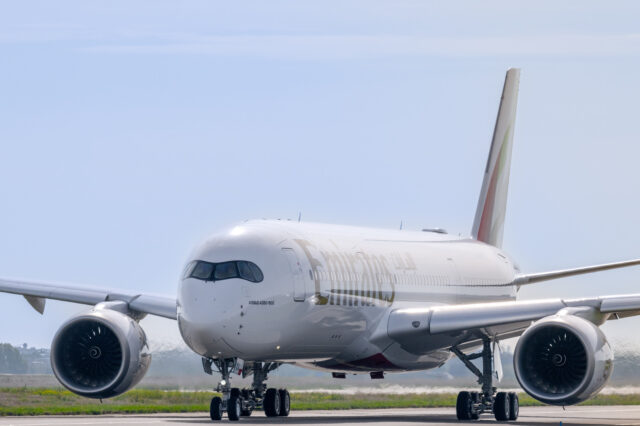IATA AGM: SAF production set for growth but needs policy support
Image: IATA
IATA said it expects overall renewable fuel production to reach an estimated capacity of at least 69 billion liters (55 million tonnes) by 2028.
Sustainable Aviation Fuels…

Image: IATA
IATA said it expects overall renewable fuel production to reach an estimated capacity of at least 69 billion liters (55 million tonnes) by 2028.
Sustainable Aviation Fuels (SAF) will comprise a portion of this growing output which is being achieved through new renewable fuel refineries and the expansion of existing facilities. Importantly, the expected production has a wide geographic footprint covering North America, Europe and Asia Pacific.
“The expected production increase is extremely encouraging. Seeing this, we need governments to act to ensure that SAF gets its fair production share. That means, in the first instance, production incentives, to support aviation’s energy transition. And we need continued approval for more diversification of methods and feedstocks available for SAF production. With these two measures successfully in place, we can be confident that the expected 2028 production levels will be realistically aligned with our recently published roadmaps to net zero carbon emissions by 2050. That is important as we are counting on SAF to provide about 62% of the carbon mitigation needed in 2050,” said Willie Walsh, IATA’s director general.
Trends supporting this optimistic outlook are already visible. In 2022, SAF production tripled to some 300 million liters (240,000 tonnes) and project announcements for potential SAF producers are rapidly growing. IATA counts over 130 relevant renewable fuel projects announced by more than 85 producers across 30 countries. Each of these projects has either announced the intent or commitment to produce SAF within their wider product slate of renewable fuels. Typically, there is a 3 –5-year lag between a project announcement and its commercialisation date. This implies that further renewable fuel capacity out until 2030 could still be announced over the following years.
If renewable energy production reaches 69 billion litres by 2028 as estimated, the trajectory to 100 billion litres (80 million tonnes) by 2030 would be on track. If just 30% of that produced SAF, the industry could achieve 30 billion litres (24 million tonnes) of SAF production by 2030.
“Achieving the necessary SAF percentage output from these new and expanding facilities is not a given. But with governments the world-over agreeing at ICAO to a long-term aspirational goal (LTAG) of net zero by 2050, they now share accountability for aviation’s decarbonisation. That means establishing a policy framework to ensure that aviation gets the needed share of renewable energy production in SAF,” said Walsh.
Policy Support & Government Investment
The case for diversification, within current sustainability criteria, is clear. At present, it is expected that 85% of future SAF volume over the next five years will be derived from just one of nine certified pathways, being Hydrotreated Esters and Fatty Acids (HEFA), which is dependent on limited availability of feedstock such as waste fat, oil and grease feedstocks (FOGs, recognised by industry as second-generation feedstock).
IATA identifies three main avenues to achieve SAF diversification:
Scale already certified SAF pathways, such as Alcohol-to-Jet (AtJ) & Fischer-Tropsch (FT)
Accelerated R&D for SAF production pathways that are currently in development
Scale up of feedstock/feedstock conversion technology
Accelerating these avenues to commercialised levels will require policy leadership from governments. To start, there is an impending need for the harmonisation of core SAF policies (pdf) as a means of reducing administrative, logistical and geographic barriers to entry for new market entrants, including producers, feedstock providers, and off-takers.
More fundamentally, the challenge is finding the capital needed to fund the development of new technology and production facilities. Governments must look at the broader sustainability picture with these investments. SAF can be produced from surplus forestry and agricultural residues, municipal solid waste, food waste and wet wastes (third generation feedstocks). Producing SAF from these can create long-term return on investment opportunities for governments, with the potential of financing the clean-up of the environment, supporting developing economies and delivering a future-proofed intersection of energy transition and energy security.
Passenger Support
A recent IATA survey revealed significant public support for SAF. Some 85% of travellers agreed that governments should provide incentives for airlines to use SAF.
“People have experienced governments’ role in the transition to green energy for electricity. They now expect it for SAF. The G7 leaders are among the latest to reiterate their understanding that SAF is critical for sustainable aviation. Now they must support their declarations with effective policies. To promote SAF production, there are many tried and tested tools including tax credits, grants, or even direct investments in emerging technologies and solutions. The market is there. Airlines want to purchase SAF. Anything to meaningfully incentivise SAF production will be a step forward,” added Walsh.
Subscribe to the FINN weekly newsletter
















